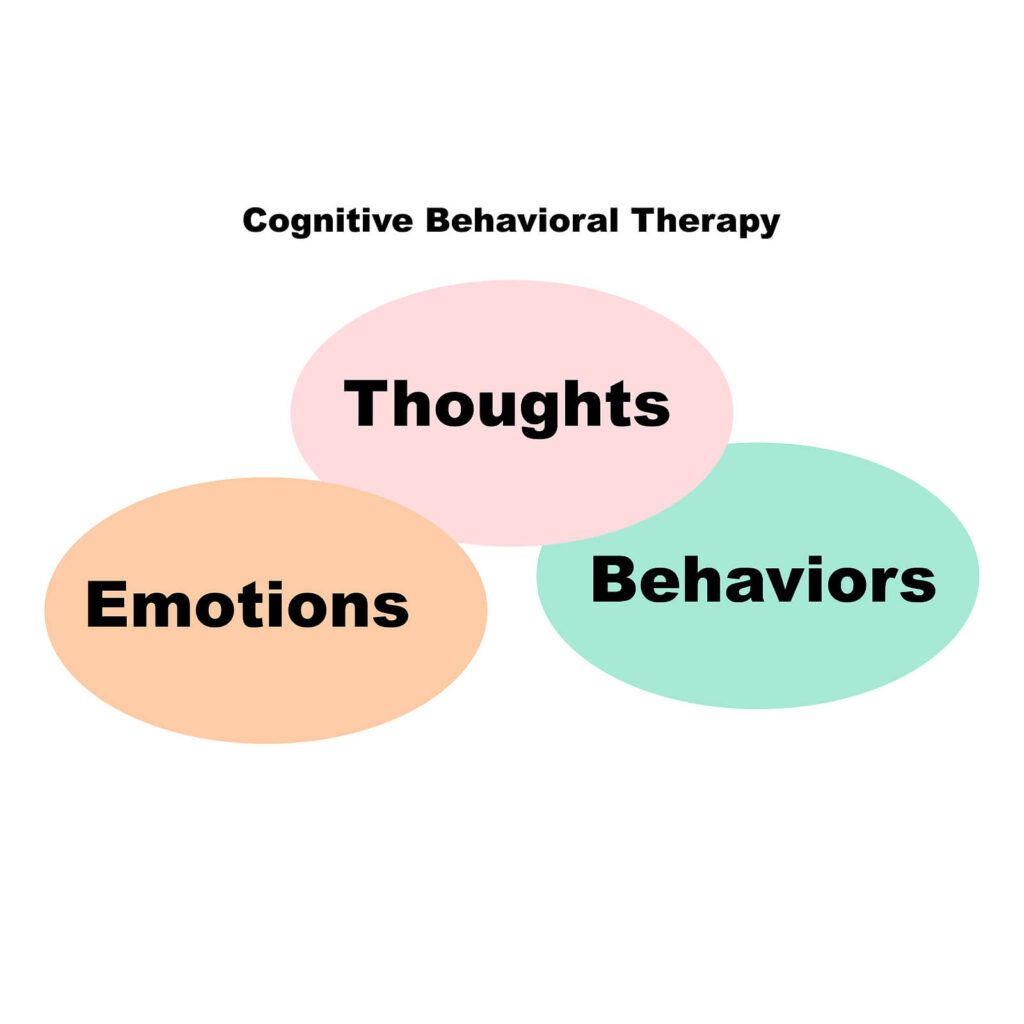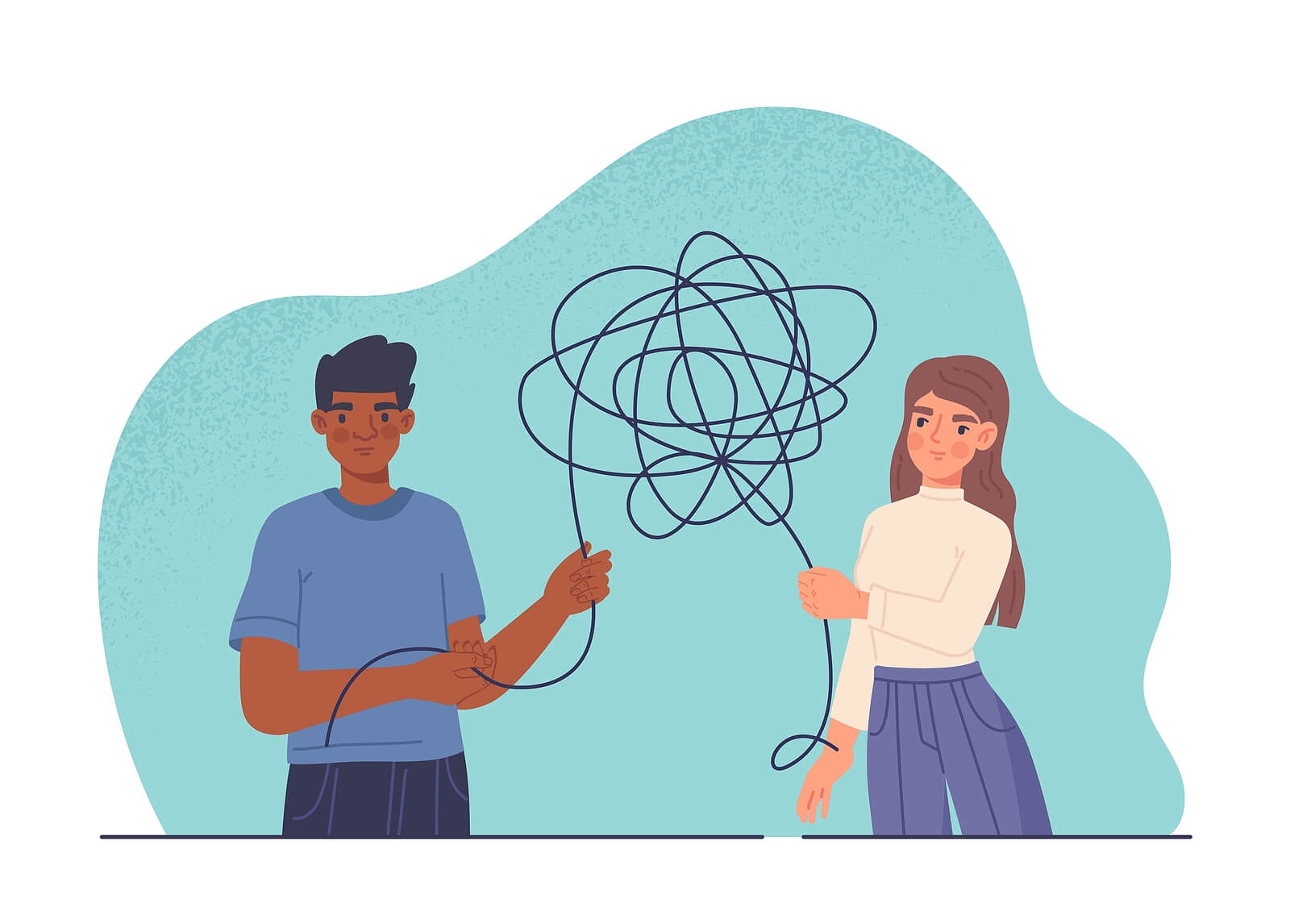Have you ever experienced that despite your efforts to communicate with your partner, the discussion only appears to escalate the issues? Numerous couples encounter difficulties in conveying their emotions or comprehending one another. These challenges can result in irritation, miscommunication, and emotional separation. Nonetheless, these problems are not impossible to overcome. Cognitive Behavioral Therapy (CBT), which aims to alter unproductive thought patterns and behaviors, provides effective strategies to tackle these problems. This blog will examine how CBT can assist couples in enhancing communication, restoring trust, and fostering a deeper emotional bond.

Understanding the Role of Communication in Relationships
Effective communication is the foundation of strong relationships. It allows partners to express their feelings and ideas, settle disagreements, and strengthen their connection. Ineffective communication can lead to minor misunderstandings growing into major conflicts. Criticism, defensiveness, stonewalling, and misunderstanding intentions rank among the frequent communication problems that stress relationships.
For example, one partner might interpret a lack of attention as apathy, whereas the other could just be distracted by outside pressures. As time passes, these behaviors may result in sensations of being ignored, undervalued, or misinterpreted. Here is where CBT or a CBT therapist can have a significant impact. By recognizing and tackling these patterns, CBT provides useful techniques to assist couples in communicating more efficiently. It emphasizes raising awareness of detrimental thoughts and actions while offering resources to encourage more positive interactions.
What is CBT and How Does it Work?
Cognitive Behavioral Therapy is a therapeutic method that explores the relationship between thoughts, emotions, and actions. It assists people in recognizing unproductive thinking habits and creating methods to react in more positive ways. In the realm of relationships, CBT provides couples with strategies to tackle challenges by emphasizing the comprehension and alteration of the fundamental dynamics in their interactions. CBT at Kind Mind Psychology assists individuals in identifying automatic negative thoughts, like viewing a missed message as indifference, and helps reframe these thoughts to explore other possible explanations, such as the partner being occupied with work.
Along with reshaping thoughts, CBT incorporates behavioral practices that instruct partners to practice active listening and ask clarifying questions to diminish defensiveness and enhance understanding. For instance, instead of stating, “You always ignore my emotions,” a partner could express, “Could we discuss why you appeared preoccupied before?” These exercises promote a teamwork mindset, motivating both partners to tackle disputes with curiosity and empathy instead of assigning blame. The efficacy of CBT stems from its emphasis on teamwork and actionable solutions. By tackling the underlying issues of communication challenges, it equips couples with resources they can apply daily to strengthen their bonds.

How CBT Can Improve Communication and Connection
Identifying and Changing Negative Thought Patterns
Negative assumptions about a partner’s intentions often act as barriers to effective communication. For instance, assuming a partner’s forgetfulness indicates they don’t care can lead to resentment and conflict. CBT encourages couples to pause, examine these assumptions, and consider alternative explanations. This shift in perspective reduces misunderstandings and fosters empathy.
Learning Better Communication Skills
CBT instructs couples in particular communication methods to assist them in expressing themselves efficiently. Active listening, for instance, entails focusing completely on the speaker without interrupting or preparing a reply too early. Employing “I” statements, like “I feel…” rather than blameful expressions such as “You always…”, aids in expressing feelings without provoking defensiveness. Requesting clarifying questions guarantees that both partners comprehend one another’s viewpoints. For instance, rather than stating, “You constantly disregard my emotions,” one could express, “Can we discuss why you appeared inattentive earlier?”
Managing Emotional Responses
Disputes frequently evoke strong feelings, hindering effective communication. CBT aids couples in acquiring emotional regulation techniques to stay composed amid conflicts. Methods like mindfulness, deep breathing, or taking a short break enable partners to tackle conflicts with a more focused mindset. By controlling their emotional reactions, couples can address problems in a constructive manner instead of a reactive one.
Rebuilding Trust and Connection
CBT promotes empathy and understanding by urging partners to examine each other’s values and beliefs regarding relationships. This procedure reveals unfulfilled needs and harmonizes expectations. Over time, substituting blame with curiosity and empathy restores trust. Partners discover how to affirm each other’s emotions, fostering a deeper emotional bond and a spirit of collaboration.
Practical Example of CBT in Action
Imagine a scenario where Sarah and James often dispute over household duties. Sarah feels burdened and thinks James is unconcerned about her difficulties. James, conversely, perceives himself as criticized and undervalued for his contributions. In CBT, they start by writing down their thoughts and responses when faced with conflicts. Sarah understands that she frequently thinks James’s absence of motivation indicates he is indifferent. James realizes that he tends to pull back when he feels cornered, which intensifies Sarah’s irritations. During therapy, they work on reshaping these thoughts. Sarah discovers how to communicate her needs without blaming James (“I would be grateful if we could share tasks more fairly”). James, on his part, recognizes Sarah’s emotions and engages in active listening without responding defensively. They collaboratively pinpoint effective solutions, like establishing a common timetable for household tasks. As time goes on, these adjustments enhance their interaction and reinforce their connection.
How CBT in New York City, NY Helps Couples Reconnect and Communicate With Care
Communication is essential for relationships, but it can sometimes seem like an overwhelming obstacle. Cognitive Behavioral Therapy provides couples with a route to connection and understanding by tackling negative thought habits, promoting effective communication skills, and encouraging emotional control. Using methods such as journaling, shifting perspectives, and role-playing, CBT assists couples in resolving conflicts with understanding and teamwork. By utilizing these resources, partners can restore trust, enhance their emotional bond, and foster a more positive, satisfying relationship.

Begin CBT Therapy in New York City Today
If you and your partner are struggling to communicate or feeling emotionally disconnected, you’re not alone—and support is available. At Kind Mind Psychology, our therapists use Cognitive Behavioral Therapy (CBT) to help couples break unhelpful patterns, rebuild trust, and reconnect with care. Start your journey toward better communication and a stronger relationship!
- Reach out today to begin CBT therapy in New York City. We’re here to help you grow together.
- Explore our blogs to learn more about Cognitive Behavioral Therapy.
- Untangle unhelpful thought patterns, improve emotional regulation, and develop the skills needed for healthy, compassionate communication.
Therapy Services in New York and North Carolina Designed for You
At Kind Mind Psychology, we offer more than just couples therapy in New York. We’re here to support your mental health journey in whatever form it takes. From LGBTQ+ affirming therapy that creates space to explore and celebrate your identity, to sex therapy that helps deepen connection and communication. Our services also include teen therapy, IFS therapy, and alternative lifestyle therapy. If you’re working through the impact of trauma, we offer evidence-based trauma treatment to help you heal at your own pace. Whether you’re looking for DBT or ADHD therapy, we’re committed to walking alongside you with care and expertise.

